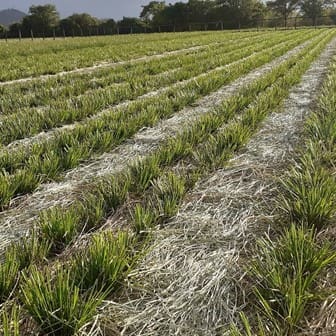HOW TO MAINTAIN HEDGEROWS
Hedgerow maintenance is important, especially in the first year, to assure proper establishment of the hedge. After that maintenance depends as to whether the objective is to retain a “pure” vetiver hedge application or a more passive objective of allowing eventual takeover by native plants.

Weeding newly planted hedge rows will promote vigor, but once established, it will tolerate weeds between the hedgerows with no adverse effects on the plants. The one exception is in the case of viny weeds such as kudzu (Pueraria montana) that can grow over the hedges and smother them by shading. Note following active vetiver maintenance schedules involving hedgerow cutting once or twice a year can produce high volumes of biomass that can be used to mulch adjacent crops. Particularly important on steep and shallow land that may be planted to perennial tree crops or more widely spaced annual crops like vegetables and maize. Mulch reduces soil temperature, reduces soil moisture loss, and builds up soil organic matter.

